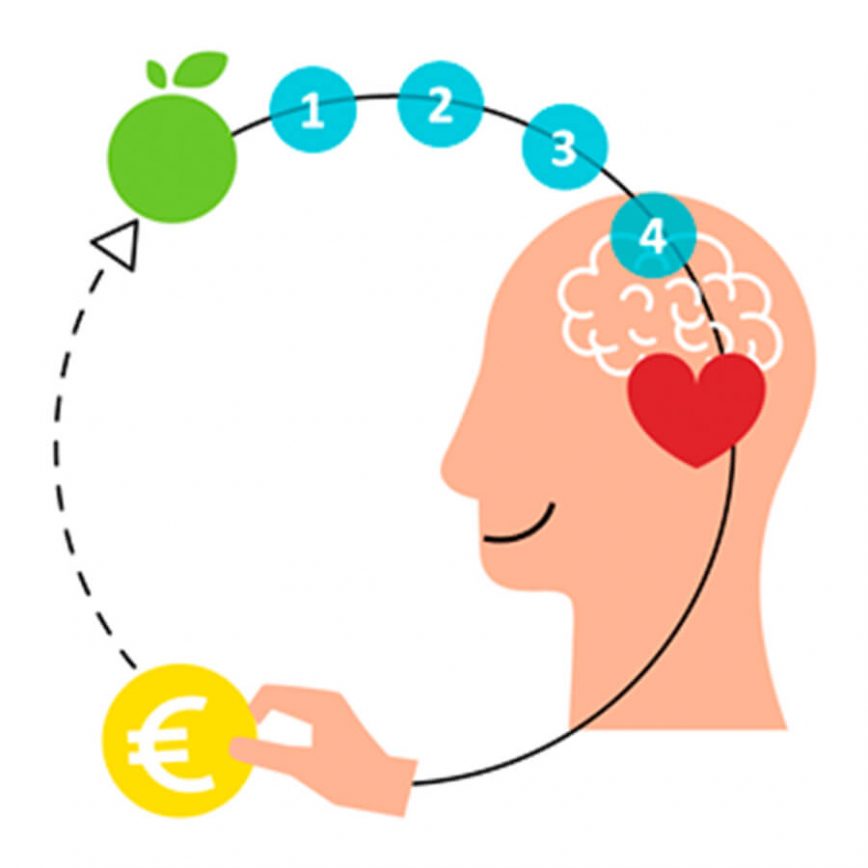Hace muchos años en la Cuesta de Moyano en Madrid, donde se venden libros antiguos y de ocasión, vi un libro con el mismo título que este artículo dentro de la colección “Guías del Enterado” (Harding y Walton editorial Modadori). Estaba empezando a trabajar y a tontear con el marketing y, claro, con tan sugerente título, no pude resistirme y acabé comprándolo. La primera frase de libro no defrauda “La actividad del marketing consiste en coger algo sencillo y obvio y ofrecerlo con un envoltorio de fantasía”. El resto del libro explica lo que tienes que hacer para parecer que sabes de marketing sin saber. Sin desperdicio.
Lo que ocurre es que, con libro o sin libro, es cierto que hablamos de marketing demasiados y con demasiada ligereza. Es fácil opinar sobre lo que aparentemente parece sencillo. Cualquiera puede opinar sobre un diseño o si le gusta un anuncio o no. Este sesgo cognitivo se conoce como efecto Dunning-Kruger que consiste en que las personas poco conocedoras de una materia a menudo se perciben como expertas. Si por ejemplo se tratase de finanzas a nadie se le ocurriría hacer un brainstorming con todos los departamentos de la empresa para tomar decisiones financieras, pero en marketing, SÍ. La confusión en muchos casos es importante y raya en empanada mental, todos opinan, todos conocemos alguna terminología del marketing, nos enfrascamos en debates y al final se deriva generalmente en un mal uso y especialmente en el sector agroalimentario.
Hay algunos errores capitales en marketing, pero el error de los errores, el error más inhumano es considerar al marketing como un coste en lugar de un creador de valor y en consecuencia dejarlo en manos del área de gestión en lugar del área de liderazgo. El gerente operativo hará picadillo al marketing al verle cara de coste, lo reducirá a la mínima expresión, lo despojará de todo valor estratégico, lo volverá ineficaz y una vez muerto y enterrado pisoteará su tumba indicando que para lo que valía cualquier coste era caro. En las empresas tenemos generalmente empacho de gestión y carencia de liderazgo, esto hace que el poco marketing que se hace en muchos casos no sirva para nada. El marketing si no está pegado al liderazgo, si no está junto máximo nivel de la empresa y al servicio de la creación de valor se convierte en una actividad que carece de sentido gastapresupuestos.
Pero entonces ¿Qué es el marketing? Es convencer a alguien de que haga algo que en principio no tenía pensado hacer, generalmente se trata de su mayor defecto para nosotros, no comprar nuestros productos, y que se sienta orgulloso de ello. Se trata de convencer a personas de que hagan algo que nosotros queremos y se sientan bien, es psicológico, como todo.
Un kit de supervivencia básico de marketing para empresas debería cubrir los siguientes puntos para considerarse realmente útil (en el fondo es un time lapse donde alguien se saca el dinero del bolsillo y nos lo da a nosotros en lugar de a nuestra competencia):
- Antes de nada, estrategia de negocio, ¿para qué hacer marketing si no sabemos dónde estamos y adónde vamos? Antes del marketing: misión, visión, hoja de ruta, posicionamiento estratégico, etc.
- Un presupuesto asignado ayuda mucho, aunque a priori aún no se sepa muy bien qué es lo que se va a hacer. Ya se recalculará o reasignará al final.
- Escribe la carta a los reyes magos del marketing. “Lo que quiero del marketing es…”: vender un producto nuevo, introducirme en un nuevo mercado, tener un nuevo cliente, fidelizar proveedores, crecer en un mercado, etc., etc. Sin imposibles.
- Identifica quiénes son las personas que tienen la capacidad de decidir sobre lo que le has pedido al marketing y cómo se prescriben entre ellos. ¿Cuántos perfiles son? Contempla todos los stakeholders de la empresa y escoge bien. Aquí hay que poner caras.
- ¿Qué quiero que hagan cada uno de esos perfiles que ahora no hacen? Esto requiere ser más preciso, si en el punto 3 pusimos “crecer en una gama de productos”, aquí habrá que poner que el perfil de consumidores X compre más producto Y”.
- Identifica qué tienen en las cabezas esas personas en los dos hemisferios: el racional y sobre todo el emocional que será el que al final prevalezca. Es realizar un escáner cerebral. Se trata de percepciones, no de hechos.
- ¿Por qué van a cambiar? ¿Qué les va a mover a comprarnos a nosotros en lugar de a nuestra competencia? Citando a Seth Godin “un buen marketing debe vender sentimientos, estatus y conexión, no tareas ni trastos”. En cualquier caso, este es el punto más creativo e importante ya que es escoger dentro del escáner cerebral el área, que va a dar la orden a la mano de que saque el dinero del bolsillo, nos lo dé a nosotros y se sienta bien. Nunca será una razón sino una emoción más o menos subyacente. O será palo o será zanahoria, o le gusta o le disgusta, o soluciono un problema o no, o placer o dolor, o le emociona o no.
- ¿Cómo los voy a convencer? Es hacer el plan de acción y su ejecución. Cómo llamo su atención, cómo apelo a la emoción. Cómo voy a incidir en ese resorte mágico, qué mensaje escoger y qué medios voy a utilizar, ahora sí, ¡a gastar el presupuesto!: redes sociales, anuncios en prensa, visitas… A veces este punto se confunde con todo el marketing eclipsando todo el proceso estratégico de los puntos anteriores.
- ¿Cómo voy a medir resultados?. No se trata de medir impactos en redes sociales, de lo que se trata es de medir resultados reales, preferiblemente el dinero en nuestra cuenta bancaria.
- Rodéate de socios que aporten. Más que agencias de publicidad que gasten el presupuesto, necesitamos agencias-socio que se peguen a nuestra estrategia, que sepan de nuestro negocio tanto como nosotros, que se alineen estratégicamente y que se centren con nosotros en nuestra área de valor y trabajen hombro con hombro con nosotros. Ese tipo de agencias no tienen precio.
El marketing es una fantástica herramienta de creación de valor que necesita sacarse quirúrgicamente del área de gestión y llevarla a la de liderazgo y valor, sistematizarse por profesionales, mucha creatividad estratégica, centrarlo en trabajar percepciones de las personas identificadas y socios que trabajen en equipo. Con este tipo de marketing nos podemos aventurar a explorar los océanos azules de valor.
Si te ha interesado este artículo, en el congreso de II Congreso Agromarketing a celebrar el día 27 de Junio de 2019 en el Parque Científico Tecnológico de Almería (PITA), ahondaremos en este esquema con ejemplos prácticos. ¡Te esperamos!
How to bluff your way in marketing
Years ago, in a neighborhood called “La Cuesta de Moyano” in Madrid where they sold antique and second-hand books, I came across a volume with the same title as appears for this article, Bluff Your Way in Marketing (Harding and Walton, 1996, Ravette) which was part of a collection called Bluffer’s Guides. I was just beginning to work and play around with different ideas in marketing, and so of course I couldn’t resist buying a book with that suggestive title. The first sentence of the book did not disappoint me: “Marketing activity involves taking something simple and obvious, and packaging it with fantasy.” The rest of the book explains how to pretend you know about marketing. No comment.
With or without such a book, we often speak too lightly and casually about marketing. It’s easy to form opinions about marketing because it appears to be so simple. Anybody can have their perspective about a design, or say whether they like a particular advert or not. This cognitive bias is known as the Dunning-Kruger effect, when un-trained people pose as experts in a field. If for example we were talking about finance, nobody would think to have a brain-storming session with all departments about financial policies, but in marketing–YES. The resulting confusion descends into mental mush where everybody has an opinion and knows some of the terminology for marketing, and so we float aimlessly into endless debates like a ship without a rudder. This can happen a lot in the agro-foods industry.
There are many big mistakes to be made in marketing, but the error of all errors, the most inhuman mistake, is to consider marketing as a cost instead of a creator of VALUE, and thus leave it to middle management rather than to the leadership of the company. A manager who slashes the marketing budget because it costs too much will reduce the plan to minimal expression stripped of all strategic value and rendered ineffective. Once it is dead and buried, he will step all over the tomb just to show that any money spent on marketing is too much. In business marketing generally there is a glut of management and a lack of leadership, which ensures that what little marketing there is produces no practical results. If marketing isn’t stuck to leadership, if it isn’t joined to the highest levels of the company for the creation of value, then it becomes a senseless budget-busting activity.
What then is marketing? Marketing convinces someone to do something they didn’t intend to, focuses them on their biggest defect which from our point of view is that they are not buying our product, and makes them feel proud of it.
We are talking here of convincing people to do what we want, and to feel good about it. It’s psychological, pure and simple.
A basic survival kit, for marketing in a business to be truly effective, should cover the following points (Imagine this is a time-lapse video showing how somebody takes money from his pocket and gives it to us rather than to the competition):
- Before anything else, strategy, a business marketing plan. Why do any marketing, if we don´t know where we are or where we are going? Before marketing, think about your mission, vision, roadmap, strategic positioning, etc.
- Assign a budget. That helps a lot even if you still aren´t sure what exactly you are going to do. It can be re-calculated or re-distributed at the end of the process.
- Write a Letter to your marketing Santa. “All I want from my marketing is …” to sell a new product, enter a new market, get a new client, build loyalty, etc. Nothing is impossible. Just ask!
- Identify the profiles of people who can make decisions regarding your marketing goal. What people have are stakeholders in your business? Who are your clients? Choose them well. Here is where you put real faces to your goals.
- What do you want each of these people to do that they are not doing already? Here you must be more precise. If your letter to Santa said, “increase sales in this range of products”, you now must specify the profile of consumers X who will buy more of product Y.
- Identify what’s in the heads of those people, in both hemispheres, the rational and above all the emotional, which in the end will prevail over reason. Do a “brain scan” that focuses on people’s perceptions more than facts.
- What will make them change? What will move them to buy from us rather than the competition? Seth Godin says that “Good marketing must sell feelings, status and connection, not tasks or junk.” This is the most creative and important point, where we have to choose what specific area of the brain scan will command them to take money out of their pockets and give it to us. It will never be a reason, just a subliminal emotion. Will it be the carrot or the stick? What they like or dislike? Will it solve a problem? Will it produce pleasure, or pain, or will it excite them?
- How can we convince them? Here is the action plan that calls to the clients, that appeals to their emotion. How are we going to activate that magic spot in their heads? What message will we choose, and how will we deliver the message? Now is the time to spend the budget! Social media? Newspaper adverts? Personal visits? But be careful, because sometimes this step can eclipse the marketing strategy we developed from all the previous steps.
- How can we measure results? Not simply by how many hits we get on social media, but by a real measure of tangible results, preferably by money in the bank.
- Make your team with people who contribute. We need more than just agencies who spend our marketing budget. We need agencies and associates who stick to our strategy, who know as much about our business as we do, who focus on our value spot and who work shoulder to shoulder with us. That type of team is priceless.
Marketing is a fantastic tool for creating value that needs to be surgically cut away from mere management and linked inextricably to the leadership and values of the company. Marketing needs to be professional and systematic with strategic creativity; it needs to focus on working the perceptions of the consumer target as well as those on the company’s team. With this type of marketing we can dare to explore vast blue oceans of VALUE.
If this article has been interesting, come to the 2nd Agro-marketing Congress on the 27th of June, 2019 at the PITA (Parque Científico Tecnológico de Almería). We will explore these points further with practical examples.
Looking forward to meeting you there!


